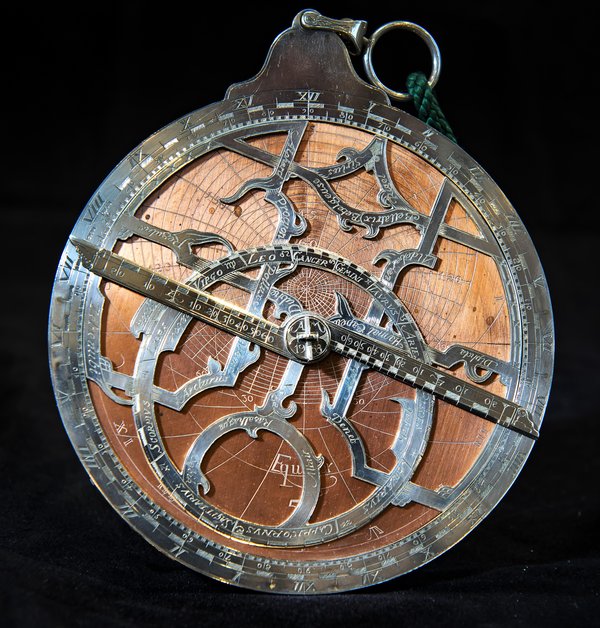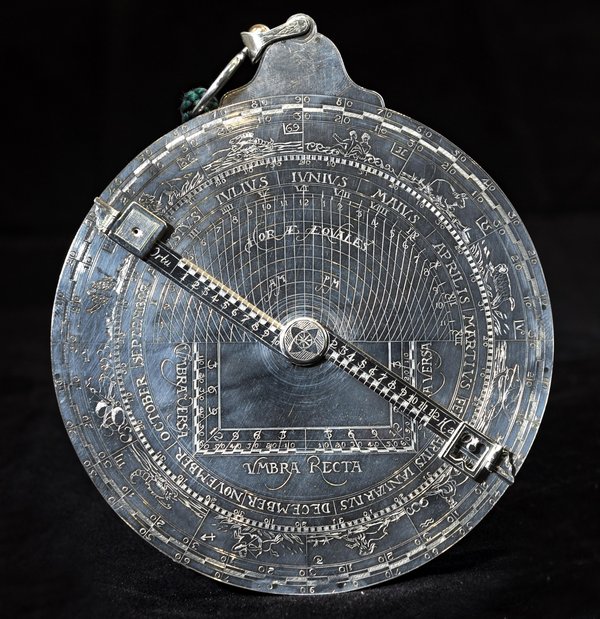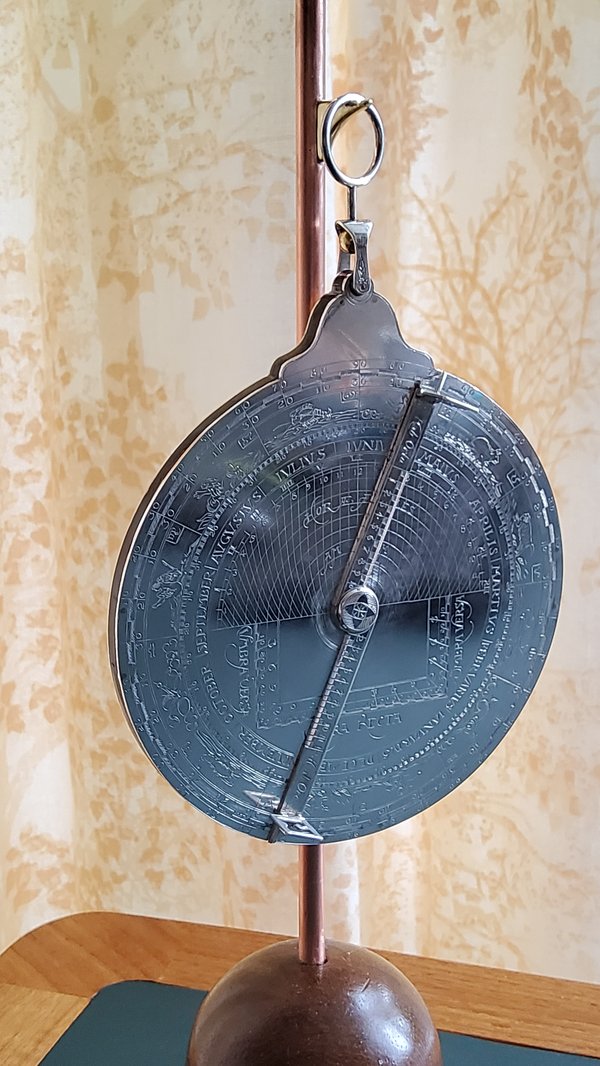The Ivanhoe Astrolabe
This post was written by Andrew Miller
Recently I re-discovered (in a drawer) a piece of work that for me is ancient (30 years) but for the type of work is quite new (less than 500 years). It might be of passing interest to members.
It is solid state and largely untroubled by mechanical disturbances. Its accuracy should not deteriorate significantly over the next few hundred years.

It is a 1988 reworking to a smaller scale of an Arsenius astrolabe. Arsenius worked in Holland in the 16th century and is one of the great astrolabe makers. The original would have been a brass instrument some 11" diameter; this is 110mm and made of silver, ebony and copper.
The era has been updated to the current era, whereas many astrolabes are calibrated for an era some 2000 years ago when the fixed stars and constellations were first placed around the ecliptic. This is handy for using the instrument today although astrologers prefer the ancient calibration because the stars are in the 'right' place relative to Sun and planets.
The device was the must-have techno-gadget for cool dudes in the late 1500s. It will show current time and date if you have celestial sightings and the positions of the fixed stars and Sun if you have a time and date.

It will calculate not only the equal and unequal hours (the latter used in medieval times before reliable clocks were widely available) but also the height of tall buildings.
The face of the instrument has the standard rete (web) and rule through which the latitude plate can be observed. Four latitude plates are included inside the instrument and are engraved for five northern latitudes. The reverse has the calendar and zodiac on a 360 degree scale which can be used with the alidade for sighting the altitude of the Sun and fixed stars as well as predicting their altitudes.
Made in 1988 after I had spent some months at sea on the sailing yacht 'Ivanhoe' and had ample time to star-gaze under unpolluted skies. So I call it the Ivanhoe Astrolabe.
